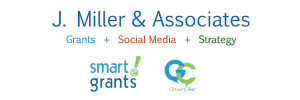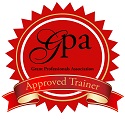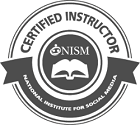Program Officer: Friend of Foe? Part 2
In our second installment of Program Officer: Friend or Foe we find that the exceptional Program Officer has become more than a friend and moved into the role of Champion!
Five years after Project Streamline explored the burdens of grant applications and reporting, their new report explores streamlining trends, success, barriers and perceptions. It looks at where the field is with streamlining and where it should go next.
This new report Practices That Matter: Taking Stock of Streamlining exposes the Streamline Champion!
Streamlining grants applications and reporting requires grant makers to take time to gather information about their process and about best practices. It requires an investment in evaluation of practices to make positive and impactful process changes. For this extra work and initiative to take root there must be a champion.
In fact, in larger organizations, streamlining is often started by the people responsible for collecting and managing information. According to the report, Grants Managers were the most common Streamline Champions while Program Officers and Executive Directors were the second most common champions of streamlining practices for grants applications and reporting.
I think it is important to note that many Grants Managers also serve as the Program Officer and the roles often overlap. Again, persons in these positions are most likely the individuals responsible for gathering information concerning community needs, capturing data from grantees and evaluating grantee impact. They have their finger on the pulse and, the good ones, listen to grantees. They see themselves as the grantee advocate and liaison. They understand the value in streamlining and, as a result, choose to become Streamline Champions!
What is a Streamline Champion?
An effective streamline champion invites participation at all levels in the streamlining effort. According to the report, champions who catalyzed and made
streamlining stick:
• Proved the economic and time benefits of streamlining.
• Discussed streamlining at board meetings.
• Introduced the topic at multiple staff meetings.
• Compared practices with respected colleagues.
• Reviewed best practices in the field.
• Completed the streamlining self-assessment and discussed results with all staff.
• Advocated transition to an online system.
• Publicly tested new systems and processes.
• Reviewed application and reporting materials annually with staff.
• Budgeted for the desired changes.
•”Just did it—gently and graciously”
What is a streamlined grantmaker?
Once a Streamline Champion gets buy-in throughout the grantmaker organization what changes do we see within the organization and how is the grant seeker experience different?
A streamlined Grantmaker practices grantmaking with a philosophy and process designed to ensure that it captures the information it needs for discerning decision-making without unduly burdening grantseeking nonprofits.
According to one nonprofit executive…
“First, they are so open to feedback. They engage and have actual conversations.
They give good instruction—like what, when, how, and who—so we know what to
do. Also, they don’t make you do unnecessary work before the time is right. They
ask for a concept paper that includes some basic goals, timeline, and strategies.
They give us feedback and then ask for a proposal based on the concept paper.
The proposal instructions are very clear, and if we have questions, we can ask.
They then tell us when we can expect an answer … and they give us an answer at
that time.”
“Oh … and also,” she added with a laugh, “their online system actually works.”
What matters most when considering streamlining your grantmaking process and practices?
According to the report, here’s what matters most to grantseekers:
1. Online application and reporting systems that work well, gather the right information, and store information from application to reporting, and from year-to-year.
Going online with application and reporting is both inevitable and positive, but systems have to work! Unfortunately, many still do unforgivable things… including timing out without saving, imposing mysterious character limits, and requiring information to be entered field by field, rather than cut and pasted.
2. Budget and financial reporting requirements that allow grantseekers to maintain their own financial categories.
Grantseekers responding in this round reported that many of their funders still required templates and specific formats for financials. Unfortunately, templates tend to promote error, mask important capacity issues, and ignore the fact that budgets’ main purpose is a management tool for the nonprofit itself. Here’s how one grantseeker described the issue:
“Any funder that requires the use of a proscribed template for reporting operating expense and revenue numbers tends to make our Finance people nervous. They spend so much time re-arranging numbers that they have to keep an extra excel spreadsheet as a guide to how they split up our audited financial data in order to fit the proscribed template.”
3. Clear and regular communications, including responsiveness to phone and email inquiries.
Clear communications covers a multitude of sins. Grantseekers commented that they particularly value clear, specific, and revealing guidelines that help them determine whether it is or is not worth their time to apply for a grant. Not surprisingly, applicants also wanted to communicate via phone or email with a real person who was willing to discuss a proposal before it was submitted or offer honest feedback.
4. Staged processes with techniques like a brief and simple letter of inquiry (or online inquiry form) prior to inviting a full proposal from groups most likely to receive funding.
Streamlined grantmakers minimize the number of organizations that do a lot of work when they have a small chance of success. They use clear funding guidelines and eligibility screens that reduce the number of unfitting requests. They talk with applicants prior to submission. And they filter with a letter of inquiry that is truly shorter and requires less work than a full proposal.
5. Simplified application for repeat or renewal grants
Our first report talked about the importance of “right sizing” or making sure that the requirements were appropriate to the size and type of grant and the prior relationship with the grantseekers. In this round, grantseekers especially noted the importance of a simplified application for repeat or renewal grants, which allow them to focus more energy on their work, rather than to pro-forma application requirements.
The point of streamlining has never been give out funds without careful stewardship and discerning decision-making. But Project Streamline continues to believe that it’s essential to understand the burdens of grantmaking and that it’s possible to gather information from grantseekers in ways that support, rather than detract from, their success.
Program Officers can be more than a friend to the grant program or organization they can be a Champion!
Program Officers can be part of the burden for grantees or they can make a incredible impact on the effectiveness and capacity of the grantees and chose to be a champion for their communities and the nonprofits who serve them.
Do you know a Streamline Champion? Are you a Streamline Champion? Share your story in our comments below! Have any stories that exemplify the need for streamlining? Please share those as well.
To all of you seekers and makers – the jobs are not easy but they make a difference in the world, they make a difference in lives.
Thank you all for your great work!
Jo















This Post Has 0 Comments